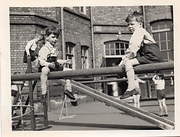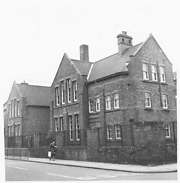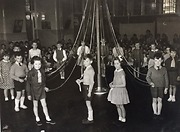 Hartlepool Sports & Leisure
Hartlepool Sports & Leisure
- Cinemas, Theatres & Dance Halls
- Musicians & Bands
- At the Seaside
- Parks & Gardens
- Caravans & Camping
- Sport
 Hartlepool Transport
Hartlepool Transport
- Airfields & Aircraft
- Railways
- Buses & Commercial Vehicles
- Cars & Motorbikes
- The Ferry
- Horse drawn vehicles
 A Potted History Of Hartlepool
A Potted History Of Hartlepool
- Unidentified images
- Sources of information
- Archaeology & Ancient History
- Local Government
- Printed Notices & Papers
- Aerial Photographs
- Events, Visitors & VIPs
 Hartlepool Trade & Industry
Hartlepool Trade & Industry
- Trade Fairs
- Local businesses
- Iron & Steel
- Shops & Shopping
- Fishing industry
- Farming & Rural Landscape
- Pubs, Clubs & Hotels
 Hartlepool Health & Education
Hartlepool Health & Education
- Schools & Colleges
- Hospitals & Workhouses
- Public Health & Utilities
- Ambulance Service
- Police Services
- Fire Services
 Hartlepool People
Hartlepool People
 Hartlepool Places
Hartlepool Places
 Hartlepool at War
Hartlepool at War
 Hartlepool Ships & Shipping
Hartlepool Ships & Shipping

Lister Street School
Details about Lister Street School
This school opened in 1899 and closed in 1989 when children were transferred to the new Eldon Grove Primary School.
In 1964, secondary children were admitted from the closed Park Road School and in 1966 the Secondary Modern part of Lister Street closed.
Location
Related items :
 Lister Street School
Lister Street School
This school opened in 1899 and closed in 1989 when children were transferred to the new Eldon Grove Primary School.
In 1964, secondary children were admitted from the closed Park Road School and in 1966 the Secondary Modern part of Lister Street closed.
More detail » Lister Street Infants School C1958
Lister Street Infants School C1958
 Donated by John Sands
Donated by John SandsDated 1958
Picture of two young boys playing on a Seesaw
On the right is John Sands
Robert Morrell is the one on the left?.
More detail » Lister Street Infants' PE
Lister Street Infants' PE
 Donated by Ann Cox
Donated by Ann CoxDated 1958
Taken in 1958 in the Infant School yard. Notice the complete absence of PE mats and the teacher leaning against the wall on the left. There were at least 38-40 children in the class and the one teacher.
The boy sitting on the ladder on the left is Geoffrey Ridsdale.
More detail » Lister Street Infants' PE (2)
Lister Street Infants' PE (2)
 Donated by Ann Cox
Donated by Ann CoxDated 1958
No mats under what was a very high scrambling net for little children! Taken in 1958 in Lister Street Infants' yard. The gateway led to the dinner huts (just visible) and into the yard facing Osborne Road where older children entered school.
The Infants' School entrance was in Flaxton Street and the gateway can still be seen today.
The child in the front of the picture facing the camera is Christine Swalwell.
More detail » Lister Street Infants' PE (3)
Lister Street Infants' PE (3)
 Donated by Ann Cox
Donated by Ann CoxDated 1958
Taken in 1958 in the school yard, the boys practise balancing wearing their 'PE kit' which simply meant removing the sweater and showing off braces or snake belts ! The entrance to the Infant department can be seen on the left.
More detail » Lister Street School
Lister Street School
 Donated by Douglas Ferriday
Donated by Douglas FerridayPart of the Hartlepool Library Service collection
Dated 1972
Lister Street School, taken in 1972.
More detail » Lister Street School 1933
Lister Street School 1933
 Donated by Mr. Steve Pearson
Donated by Mr. Steve PearsonDated 1933
Group photo of the children from Lister Street School who passed their 11-Plus exams in 1933. Steve Pearson is on the middle row, far right.
More detail » Maypole Dancing 1961
Maypole Dancing 1961
 Donated by Judith Turland
Donated by Judith TurlandDated 1961
Taken on May Day 1961, maypole dancing was an annual event for Lister Street Y2 infant children in the infants' hall.
From the front right girl, round to the front left boy are:
Marion Gowland
Susan Wilson
....... Coward (on right side in Brownie uniform)
Valerie Relton
....?
Judith Allen
Derrick Coulson
Judith Sirs
........
Joy Williams
.......
Christine Dawson
Clive Walker
Brenda Phizacklea (in Brownie uniform which was the done thing if you had one!)
Geoffrey Beatham
More detail » Memories of Lister Street School
Memories of Lister Street School
Memories of Lister Street School – C. Watson
I started at Lister Street Junior School the day the school opened – January 1901. My earliest recollection is of the Headmaster, Mr. Howard, coming into the class-room to bid us welcome to the new school. He told us that the motto of the school was to be “Fait ce que doit, advienne qui pourra” – “Do what you ought, happen what may”. After he left the room the teacher said “That means if an elephant comes into the room, you must carry on with your lessons”.
I wasn’t in the Junior School lomg and my first recollection of the Senior School upstairs is that we used to march to our class-rooms to the stirring strains of one of Sousa’s marches, thumped out on the piano by one of the teachers.
My most vivid recollection is of Dick Watson (“Daddy Watson” to us), pacing to and fro in front of the class with a frenzied look on his face, declaring that he would go home and cry his eyes out. His exasperation was no doubt due to our lack of comprehension, but we understood the meaning of his outburst even less than we understood his lesson.
In marked contrast was Arthur Hill (“Big Hilly”), the imperturbable; well over six feet high – plus another foot when he wore his busby on parade with “The Vols”. I cannot recall him getting excited or even raising his voice. He seemed to spend every spare minute with his pocket chess set, working out problems for a Sunday newspaper.
There has been a good deal of discussion lately about the value of religious education in schools. During the summer, Mr. Hill’s religious lessons consisted of reading aloud the cricket scores in the Leeds Mercury, but any talking and the Mercury went back to his desk and out came the Bible. I have good reason to remember this, because I was responsible for this volte face on one occasion – no doubt I was discussing the relative merits of the players with a neighbour.
Not long after the South African War, Sergeant-Major Davies was appointed P.T. Instructor and came to the school several days a week. He was a fine figure of a man and his word of command was worthy of his title. It was said that he was used as a model for the statue on the South African War Memorial in the Ward Jackson Park by the sculptor Doyle Jones, but whether that was so I cannot say. (The statue was stolen a few years ago).
I was rather a bilious child, a result of which I was frequently absent for a day or half-day, and used to admire the heroes - and heroines – who got gold medals for attending five years without missing once! I also recall the introduction of a scheme by which if the school had a 90% attendance one week we got a half-day holiday the following Friday.
I recall the visits by lecturers from the United Kingdom Alliance – a temperance organisation – who used to talk to us about the dangers of alcohol. He would drop a live worm into a glass jar filled with alcohol where it wriggled for a few seconds and died. (I have been a teetotaller ever since!).
My most pleasant memories are of Ex-7 – not because it was a mixed class of boys and girls, but in spite of it – we were inclined to regard the girls as intruders. I suppose we had reached an age when we could understand why we went to school and took our lessons more seriously. In this we were certainly helped by Arthur Cope Copeland, who I recall as an excellent teacher and one who I frequently met in later life. I think he made a mistake however, when he tried to teach us to sing “Who is Sylvia?” – it was too sloppy the lads.
Other memories from Ex-7:
1) Draught tournaments
2) Initiation into the mysteries of chess
3) A concert by the Bolton Banjo Quartet – this gave us a real thrill. The quartet consisted of a boy in the class and other three members of his family (they lived in Elwick Road).
4) A trip to Blackhall Rocks with tea in a big building adjoining the Blackhall Rocks Hotel
As part of our English lessons we “did” Macbeth, the Merchant of Venice and Ivanhoe. I liked the first two but was very bored with Ivanhoe; so much so that when I started to buy the Waverley Novels a few years later (Nelson’s 6d Classics), I left it until the last, when I was surprised to find that I enjoyed it quite as much as the others.
Some people think that the vandalism in the class-room is a modern feature of school life; but I can remember the boy who took a flying kick at Mr. Copeland’s new bowler hat – in his absence of course. Mr. Copeland was very upset – especially as the hat had been a present from his mother. That prank cost Harry “X” six shillings and six pence, paid in thirteen (unlucky), weekly instalments.
During my final year I was Mr. Howard’s “clerk” – at least that was how he described me. I used to do something to the registers and take them down to the Education Office once a week, but apart from that I cannot recall what my duties were. Mr. Howard was a fine pen-man, and he used a pen-nib with a loop in the middle; this held a blob of ink and enabled him to write quite a long time before dipping in the inkwell again. That, of course, was before the arrival of the fountain pen.
Apart from those already mentioned, the teachers I can recall are as follows:
Miss Chapman – Head of the Infants
Miss Waldie – Head of the Juniors
Mr. G. Rutter
Mr. H. Lister
Mr. W. Barkas
Mr. Graham
Mr. Sidney Smith
Mr. Arthur Smith
Mr. Easterby
Mr. Riley
Miss Wheat
More detail »






